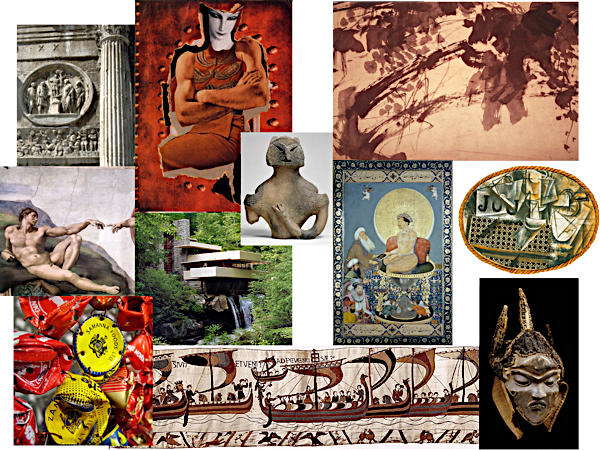
| ||||||
| Level 100 | ||||||
| ||||||
| Level 200 | ||||||
|
| ||||||
| Level 300 | ||||||
|
| ||||||
| Level 400 | ||||||
|
| ||||||
| Level 500 | ||||||
|
| ||||||
| Level 600 | ||||||
|
| ||||||
| History of Art | ||||||
| LS&A | ||||||
| University of Michigan | ||||||
| Back to the list of courses |
Introduction to Art

Humans have always been makers, yet only some forms of making are and have been viewed as art. Ideas about what counts as art vary both within cultures, and across different times and places. Art history offers a range of tools for analyzing art in its many forms and functions, and for understanding the globally connected visual cultures in which we live. This course explores key forms of visual expression and cultural production, and introduces major art historical approaches to understanding them. Through case studies that investigate art from many parts of the world and various time periods, students will learn fundamental tools of visual analysis and critical historical thinking. Lectures are organized topically, with broad geographic representation. They explore such topics as naturalism, abstraction, social uses of art, cultural politics, constructions of gender, and the changing status of artists as issues pertinent to the making of art generally, and not just the art of a particular nation or culture. By looking at how various cultures have defined, made, and made use of art, you can expect to sharpen your skills of visual and verbal analysis, while developing an informed understanding of human creativity and diversity. The comparative framework will provide ample opportunity for discussion and debate around issues of contemporary interest such as who decides what is art, or when art should be suppressed or celebrated.
Estimated Cost of Materials: $50-100
Textbooks/Other Materials: Weekly readings available in PDF on Canvas.
Course Requirements: attendance in lectures and discussion sections, completion of weekly readings and informed participation in discussion sections, several short quizzes, and one 5-page visual analysis paper.
Intended Audience: undergraduates at any level; no pre-requisites
Class Format: Three 50 minute lectures and 50 minute discussion section per week.